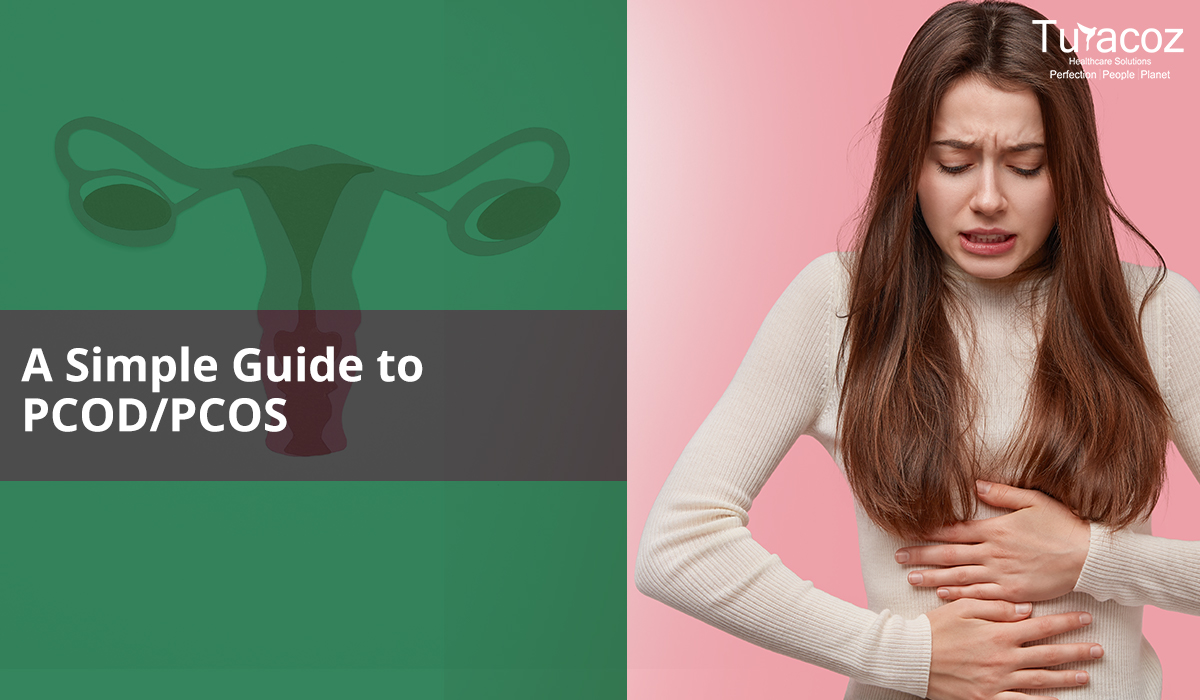Introduction
Polycystic Ovary Syndrome (PCOS), also known as Polycystic Ovarian Disease (PCOD) is one of common hormonal syndrome that women blame for their weight gain. The cause of PCOS is still unknown, but studies have shown that it may involve a combination of genetic and environmental factors (like lifestyle, pollution). Normally ovaries have follicles which contain eggs, and one or more mature eggs are released during each menstrual cycle. In PCOS, eggs in follicles do not mature and are not released, instead form cysts. The ovaries also produce small amount of male hormones. However, the absence of ovulation in PCOS leads to an imbalance in the sex hormone levels.
The common symptoms PCOS patients present:
Acne, weight gain, irregular periods, extra hair on face and body
If untreated, can lead to:
Infertility (women having regular intercourse, but fail to conceive), heart diseases, breast cancer, endometrial and uterine cancer, diabetes, obesity
Influence of obesity on PCOS:
Obesity aggravates certain manifestations in PCOS and are more likely to have menstrual irregularities. It also increases the risk of infertility, higher probability of hair growth on face and body and complications during pregnancy.
CAN PCOS BE TREATED?
PCOS can be managed by improving insulin levels using metformin, commonly used to treat type 2 diabetes.
Irregular cycles can be treated by Oral Contraceptive Pills (OCPs).
Infertility can be treated by ovulation inducing drugs.
Consult your doctor before taking medicine.
Hair growth on body and face can be treated by laser and non-laser techniques.
However, nutrition and exercise play a major role in the management of PCOS.
Nutrition strategies:
Eating fresh food, wholesome food and eating in peace is important.
Avoid foods that are over-heated or microwave food.
Carbohydrates are extremely important to be included in the diet.

Eating wheat, rice, jowar (whole grains and carbohydrates make slow and steady rise of blood sugar) is very important.
Eating complete proteins is also vital (eggs, pulses, milk, paneer).
Essential fatty acids like ghee, oils, groundnut oil, sesame, sunflower, olive oil should be included in adequate amount.
Alpha-linolenic acid (ALA)-rich food like flax seeds, peas and nuts can also be incorporated in a regular diet.
Calcium-rich foods can help in reducing general fatigue and cramps during periods.
Exercise strategies
Regular workouts are the key to regular periods.
Seven days a month is a good start.
Weight training workouts are must at least twice a week.
Cardio is a great way to burn fat when associated with learning new movements or a skill.
‘Surya namaskar’ along with pelvic opening exercises are among the best.
Sleep strategies
Maintaining sleep-wake cycle with 8 hours of sound sleep.
Resources: DC Dutta’s textbook of gynecology, Shaw’s textbook of gynecology, The PCOD-thyroid book -book by Rujuta. Diwekar






































